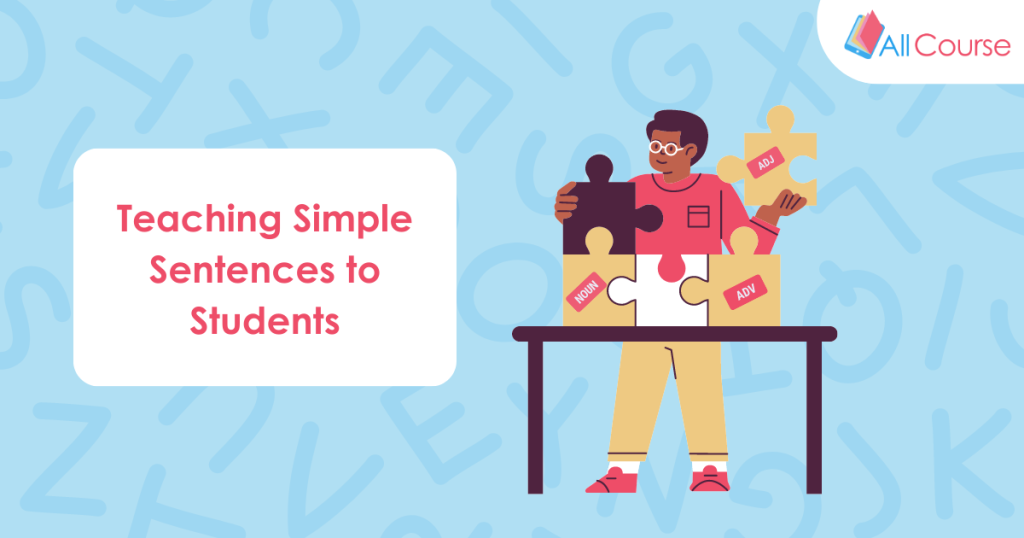
Ever since I read the book Mechanically Inclined by Jeff Anderson, I have looked at and taught grammar in a new way. When first introducing grammar to students, I use the analogy “grammar is like a puzzle: there are many pieces.” Once all the pieces are together, students will have a completed puzzle — or thought — to communicate. However, if students don’t use grammar, they could be missing crucial pieces to form a complete thought, and their puzzle will not be complete.
After explaining this analogy to students, I go over some puzzle pieces: parts of speech. After a few weeks of introducing, identifying, analyzing, applying, and creating different parts of speech, students are introduced to a clause or simple sentence.
3 Strategies for Teaching Simple Sentences
Math in Grammar?
I never thought math and grammar would be similar, yet they are. The idea of relating math to grammar was presented in the book Mechanically Inclined by Jeff Anderson. I love how Mr. Anderson connects these two subjects, and I continue to use this in my classroom today.
Whenever I ask students to raise their hands if they love math, I always get an excited reaction from my students. Students’ faces light up, and they begin to ask: “How on earth are math and grammar related?” I explain to students that in math, they have to solve equations to come up with an answer. I then tell my students that in grammar, there are also equations that are needed to create a complete thought or idea. These equations are called clauses. Each type of clause has a different equation for it. Once students are presented with a problem-solving challenge in grammar, they become more determined to see if they can solve their equation or “puzzle.”
Miss Independent… Clause
After introducing this concept to students, I present them with their first equation: the independent clause. Students and I review the definition of an independent clause first, then, I show them the equation. The equation is: independent clause = subject + predicate + . Students use their prior knowledge of parts of speech to then understand this new concept.
As a group, we go over what a subject is. I inform students that the subject of an independent clause is who or what the sentence is about. A helpful tip I give students when they are confused on what the subject of a sentence could be is to have them ask themselves: “Who or what is this sentence about?” Once we go over this definition, students then begin identifying the subject in different independent clauses.
The Predicate Slide
Then, students learn the definition of a predicate. A helpful tip I give my students when they struggle to find the predicate of an independent clause is to ask themselves “Where are the verbs in this sentence?” and “What is the subject doing in this sentence?” Then, students and I analyze different sentences, locating the predicate.
Once we find the predicate in an example sentence, I have students stand up out of their seats (each age group will vary on this next part but for 5th-grade students this works) and practice sliding one way with me, like in the Cha Cha Slide. I show students that when they find the verb in the sentence, they will “slide” showing that everything after the verb is also the predicate. After laughing and sliding a few times, students begin analyzing sentences and identifying the predicate. This kinesthetic movement allows students to better understand this concept.
All in all, teaching clauses can be confusing for students, however with the help of Mechanically Inclined by Jeff Anderson, I have been able to successfully teach an engaging grammar curriculum. I hope these tips and tricks help you in your classroom as well!
Want to teach grammar online? Create your free teacher profile on AllCourse to start getting matched with online teaching opportunities.




